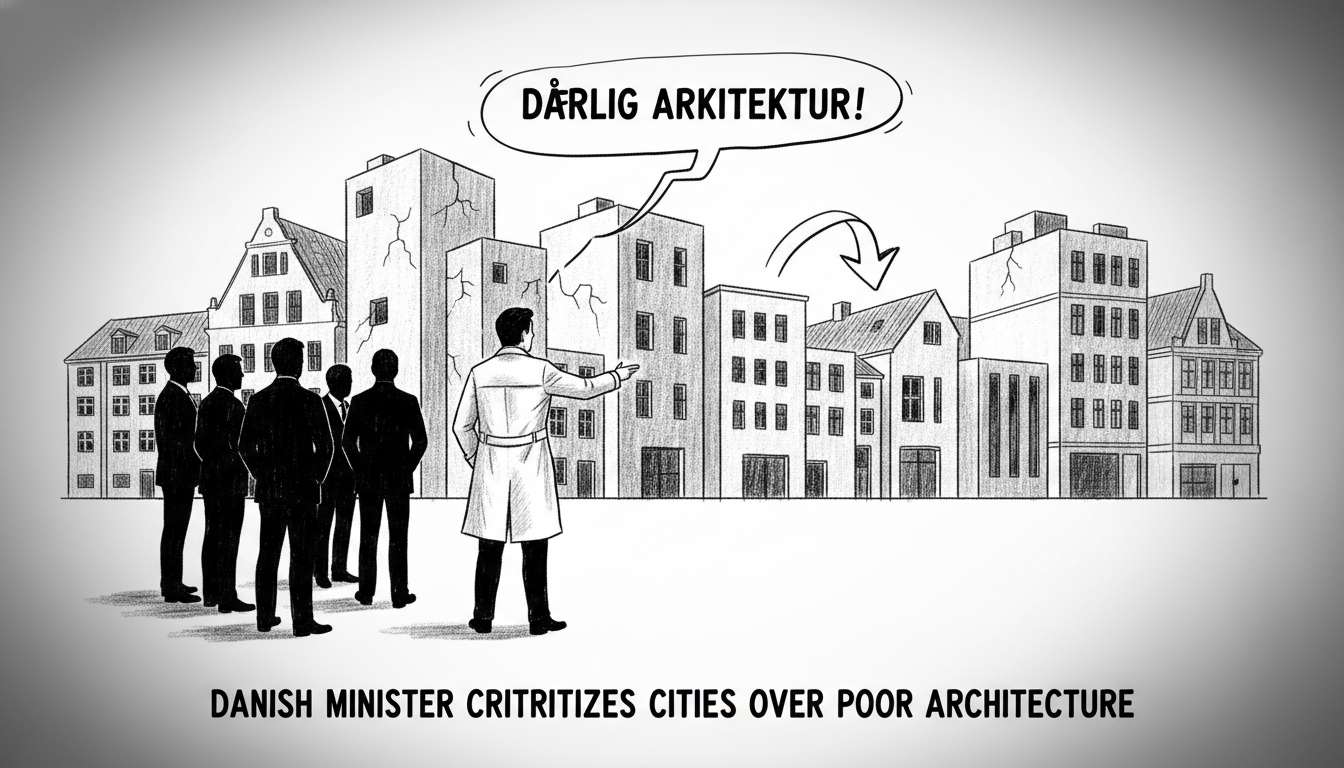Denmark's Culture Minister has launched strong criticism against several municipalities for what he calls poor architectural decisions. Jakob Engel-Schmidt specifically mentioned Aarhus and other cities in his remarks. He expressed frustration with both ugly new construction projects and the demolition of beautiful historic buildings.
The government is responding with a new national architecture policy. This policy aims to ensure more beautiful and sustainable building practices across Denmark. The minister stated that Denmark must take a stand on how its cities and communities should look in the coming years.
This criticism comes amid growing concerns about urban development in Danish cities. Many historic neighborhoods have faced pressure from new construction. Preservationists have long argued that Denmark's architectural heritage needs stronger protection.
Denmark has a rich architectural tradition spanning centuries. The country is known for both historic structures and modern Scandinavian design. Recent development patterns have sometimes prioritized density over aesthetic considerations.
The new architecture policy represents a significant shift in government approach. It signals that visual quality and sustainability will become higher priorities in urban planning decisions. Municipalities will likely face increased scrutiny for their building approvals.
Local governments in Denmark enjoy considerable autonomy in planning matters. This has led to varying architectural standards across different regions. The national government now appears determined to establish more consistent quality benchmarks.
International readers should understand that Danish architecture represents a point of national pride. The country has produced globally recognized architects and design movements. Recent debates reflect deeper questions about balancing modernization with preservation.
The minister's strong language indicates this issue has reached the highest levels of government. His use of the word 'shameful' suggests genuine concern about current development trends. This intervention could mark a turning point in how Denmark approaches urban design.
What practical changes will this policy bring? Municipalities may need to revise their building guidelines. Developers could face stricter design requirements. The government might also increase funding for architectural preservation.
The focus on sustainable building aligns with Denmark's environmental commitments. The country aims to be carbon neutral by 2045. Better architecture can contribute to this goal through energy-efficient designs and durable construction.
This situation reflects broader European debates about urban development. Many countries struggle to balance growth with preservation. Denmark's approach could become a model for other nations facing similar challenges.
The coming months will show how municipalities respond to this new direction. Some may welcome clearer national standards. Others might resist what they see as central government overreach in local affairs.

